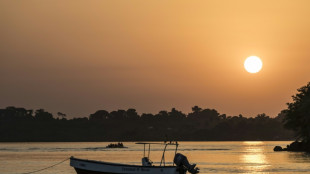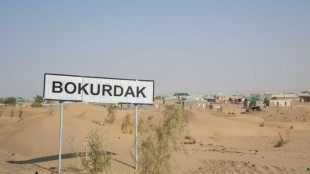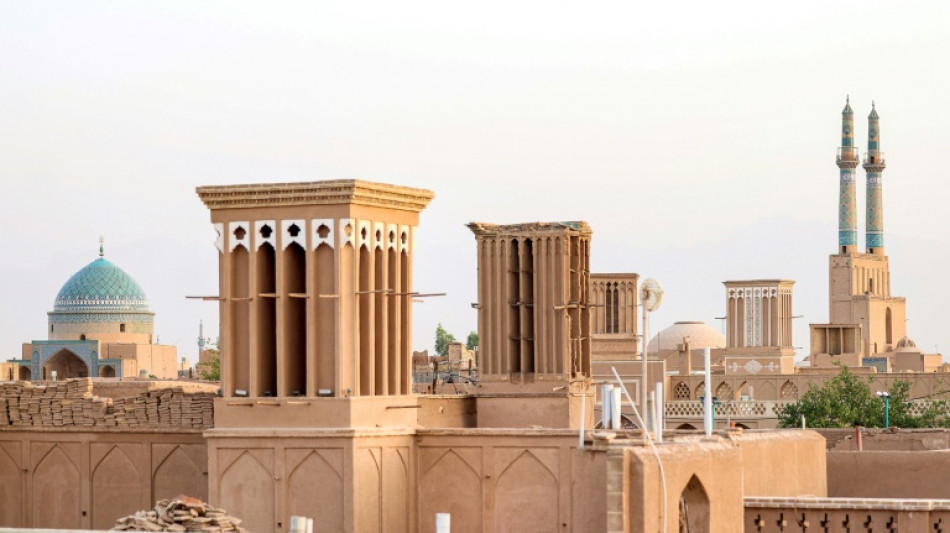
-
 England 77-2 at tea, need 98 more to win chaotic 4th Ashes Test
England 77-2 at tea, need 98 more to win chaotic 4th Ashes Test
-
Somalia, African nations denounce Israeli recognition of Somaliland

-
 England need 175 to win chaotic 4th Ashes Test
England need 175 to win chaotic 4th Ashes Test
-
Cricket Australia boss says short Tests 'bad for business' after MCG carnage

-
 Russia lashes out at Zelensky ahead of new Trump talks on Ukraine plan
Russia lashes out at Zelensky ahead of new Trump talks on Ukraine plan
-
Six Australia wickets fall as England fight back in 4th Ashes Test

-
 Man Utd made to 'suffer' for Newcastle win, says Amorim
Man Utd made to 'suffer' for Newcastle win, says Amorim
-
Morocco made to wait for Cup of Nations knockout place after Egypt advance

-
 Key NFL week has playoff spots, byes and seeds at stake
Key NFL week has playoff spots, byes and seeds at stake
-
Morocco forced to wait for AFCON knockout place after Mali draw

-
 Dorgu delivers winner for depleted Man Utd against Newcastle
Dorgu delivers winner for depleted Man Utd against Newcastle
-
US stocks edge lower from records as precious metals surge

-
 Somalia denounces Israeli recognition of Somaliland
Somalia denounces Israeli recognition of Somaliland
-
The Cure guitarist and keyboard player Perry Bamonte dies aged 65

-
 Draper to miss Australian Open
Draper to miss Australian Open
-
Police arrest suspect after man stabs 3 women in Paris metro

-
 Former Montpellier coach Gasset dies at 72
Former Montpellier coach Gasset dies at 72
-
Trump's Christmas gospel: bombs, blessings and blame

-
 Russia lashes out at Zelensky ahead of new Trump meeting on Ukraine plan
Russia lashes out at Zelensky ahead of new Trump meeting on Ukraine plan
-
Salah helps Egypt beat South Africa and book last-16 place

-
 Australia's Ikitau facing lengthy lay-off after shoulder injury
Australia's Ikitau facing lengthy lay-off after shoulder injury
-
Another 1,100 refugees cross into Mauritania from Mali: UN
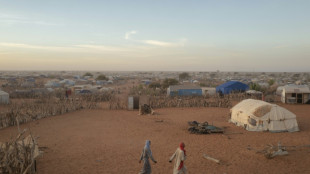
-
 Guardiola proud of Man City players' response to weighty issues
Guardiola proud of Man City players' response to weighty issues
-
Deadly blast hits mosque in Alawite area of Syria's Homs

-
 The Jukebox Man on song as Redknapp records 'dream' King George win
The Jukebox Man on song as Redknapp records 'dream' King George win
-
Liverpool boss Slot says Ekitike reaping rewards for greater physicality

-
 Judge jails ex-Malaysian PM Najib for 15 more years after new graft conviction
Judge jails ex-Malaysian PM Najib for 15 more years after new graft conviction
-
Musona rescues Zimbabwe in AFCON draw with Angola

-
 Zelensky to meet Trump in Florida on Sunday
Zelensky to meet Trump in Florida on Sunday
-
'Personality' the key for Celtic boss Nancy when it comes to new signings

-
 Arteta eager to avoid repeat of Rice red card against Brighton
Arteta eager to avoid repeat of Rice red card against Brighton
-
Nigeria signals more strikes likely in 'joint' US operations

-
 Malaysia's former PM Najib convicted in 1MDB graft trial
Malaysia's former PM Najib convicted in 1MDB graft trial
-
Elusive wild cat feared extinct rediscovered in Thailand

-
 Japan govt approves record budget, including for defence
Japan govt approves record budget, including for defence
-
Seoul to ease access to North Korean newspaper

-
 History-maker Tongue wants more of the same from England attack
History-maker Tongue wants more of the same from England attack
-
Australia lead England by 46 after 20 wickets fall on crazy day at MCG

-
 Asia markets edge up as precious metals surge
Asia markets edge up as precious metals surge
-
Twenty wickets fall on day one as Australia gain edge in 4th Ashes Test

-
 'No winner': Kosovo snap poll unlikely to end damaging deadlock
'No winner': Kosovo snap poll unlikely to end damaging deadlock
-
Culture being strangled by Kosovo's political crisis

-
 Main contenders in Kosovo's snap election
Main contenders in Kosovo's snap election
-
Australia all out for 152 as England take charge of 4th Ashes Test

-
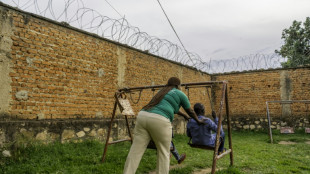 Boys recount 'torment' at hands of armed rebels in DR Congo
Boys recount 'torment' at hands of armed rebels in DR Congo
-
Inside Chernobyl, Ukraine scrambles to repair radiation shield
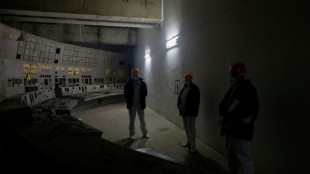
-
 Bondi victims honoured as Sydney-Hobart race sets sail
Bondi victims honoured as Sydney-Hobart race sets sail
-
North Korea's Kim orders factories to make more missiles in 2026
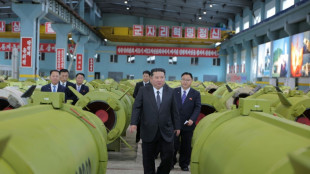
-
 Palladino's Atalanta on the up as Serie A leaders Inter visit
Palladino's Atalanta on the up as Serie A leaders Inter visit
-
Hooked on the claw: how crane games conquered Japan's arcades


Iran's ancient 'wind catchers' beat the heat naturally
Tall, chimney-like towers rise from centuries-old adobe houses in Iran's desert city of Yazd, drawing in a pleasant breeze for residents of one of the hottest cities on earth.
The wind catchers, called badgirs in Persian, are just one of the engineering marvels inhabitants have developed in this ancient city in central Iran -- where temperatures reach well over 40 degrees celsius (104 Fahrenheit) in the summer.
And, unlike energy-guzzling air-conditioners, they're cost and carbon-free.
"For centuries, before we had electricity, they made it possible to cool dwellings," said Abdolmajid Shakeri, the provincial deputy of Iran's cultural heritage and tourism ministry.
The oldest of the city's 700 wind catchers dates back to the 14th century, but the architectural feature is believed to date back as far as 2,500 years when the Persian Empire ruled over much of the Middle East.
"The badgirs played a key role in the city's prosperity," said Shakeri about the desert city that was a caravan stop on the ancient Silk Road.
"Thanks to them, people lived at ease," he added, describing how the wind catchers pull fresh air into buildings and allow hot air to ventilate out through large vertical slots.
Majid Oloumi, the head of Dowlatabad garden, home to a towering 33-metre (100 foot) wind catcher -- one of the tallest in the world -- described the cooling method as "totally clean because it uses neither electricity nor polluting materials".
UNESCO listed Yazd as a World Heritage Site in 2017, describing the city as a "living testimony to intelligent use of limited available resources in the desert for survival".
-'Simplicity'-
The bioclimatic architecture which provides thermal comfort for the people of Yazd has attracted interest elsewhere on a heating planet.
"Badgirs demonstrate that simplicity can be an essential attribute to sustainability," said Paris-based architect Roland Dehghan Kamaraji, who has studied Iran's wind catchers.
"It goes against the common misconception that sustainable solutions need to be complex or high-tech."
At a sustainable urban community called Masdar city in the United Arab Emirates, buildings have been "designed to make use of the natural ventilation for cooling, like badgirs," he said.
Similarly, ventilation inspired by "termite mounds, an approach similar to that of badgirs" were built atop Eastgate Centre, a shopping mall and office complex in Harare, Zimbabwe.
However, Yazd's unique architectural traditions have largely been abandoned at their birthplace.
"Unfortunately, our ancestral heritage has been forgotten," especially since the emergence of air conditioners, said Oloumi.
Yazd's old town is a labyrinth of narrow streets and roofed alleyways. Its centuries-old edifices made of clay, mud-brick and adobe all provide insulation against the torrid heat.
But the old houses stand in sharp contrast to modern cement buildings and multi-lane roads.
"Today, house architecture imitates that in other countries, and cement-based construction does not correspond to the climate of Yazd," he added.
Kamaraji says bioclimatic architecture has waned due to economic constraints and modern construction methods that "largely favour the use of energy and fossil fuel intensive materials".
- Old but effective -
Another sustainable architectural feature of Yazd is its system of underground aqueducts called qanats, which transport water from underground wells, aquifers or the mountains.
"These underground aqueducts have great utility," said Zohreh Montazer, an expert on the water system. "They constitute a source of water supply and make it possible to cool the dwellings and to preserve food at an ideal temperature."
Iran is estimated to have around 33,000 operational qanats today, a significant drop from the 50,000 in use in the mid-20th century.
UNESCO says the decline in qanats is driven in part by the drying up of underground water sources due to overconsumption.
Iranian authorities have in recent years sought to rehabilitate the qanat of Zarch -- considered the longest and oldest, dating to some 3,000 years ago.
The water network -- which stretches over 70 kilometres across Yazd, and runs at a depth of around 30 metres -- stands as a reminder for Yazd's residents of the challenges ahead.
"The day when fossil fuels run out," said Montazer, "we will have to return to these methods."
M.Fischer--AMWN
